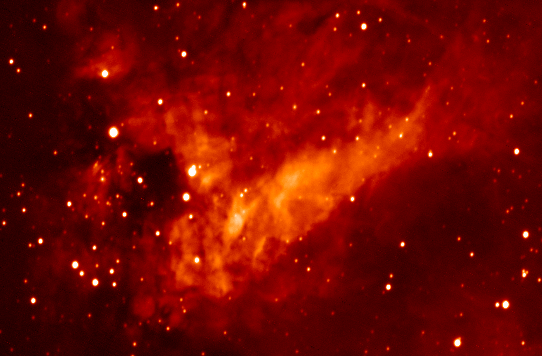Astronomy Picture of the Day
Discover the cosmos!
Each day a different image or photograph of our fascinating universe is
featured, along with a brief explanation written by a professional
astronomer.
August 29, 1996

M17: The Majestic Swan Nebula
Credit and Copyright:
B. Wallis and R.
Provin
Explanation:
What unusual eggs have been laid by this majestic swan?
The star forming region above, known as
Swan Nebula,
is the home of hot red-glowing
gas, dark lanes of
dust,
bright young stars and -- what are those?
Of the few stars visible in the
Swan Nebula,
several have quite unusual colors and are
hypothesized to be very young stars still shrouded by gas from the cloud
that formed them. The
Swan
Nebula is quite large and massive as it contains
roughly 1000 times the mass of our
Sun. The bright central region is about
15 light years across lies about 5000 light years away toward the constellation of Sagittarius. The distinctive shape causes this region to
have several other names, including the Omega Nebula, the Horseshoe Nebula,
and the Lobster Nebula.
Tomorrow's picture: Galileo Demonstrates the Telescope
| Archive
| Index
| Search
| Glossary
| Education
| About APOD |
Authors & editors:
Robert Nemiroff
(MTU) &
Jerry
Bonnell (USRA).
NASA Technical Rep.:
Sherri
Calvo.
Specific rights apply.
A service of:
LHEA
at
NASA/
GSFC
